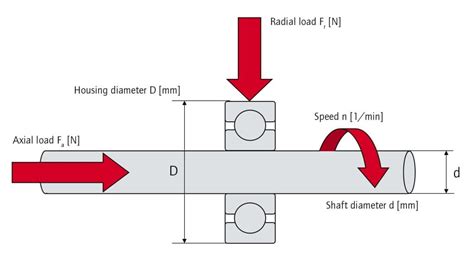Axial Bearings: A Comprehensive Guide to Design, Applications, and Maintenance
Axial bearings are critical components in various rotating machinery applications. They play a crucial role in supporting axial loads, preventing axial displacement, and ensuring smooth operation. This article provides a comprehensive guide to axial bearings, covering their design, applications, maintenance, common mistakes to avoid, and frequently asked questions.
Understanding Axial Bearings
An axial bearing is a type of bearing designed to primarily support axial loads. It allows for limited radial displacement while preventing axial movement. Axial bearings are typically used in applications where there are high axial loads and minimal radial loads.
Types of Axial Bearings
There are several types of axial bearings, each with unique characteristics and applications:

-
Thrust ball bearings: Ball-shaped rolling elements held in place by a thrust washer. Suitable for high axial loads and moderate speeds.
-
Thrust roller bearings: Cylindrical or tapered roller-shaped rolling elements. Capable of handling very high axial loads and are often used in heavy machinery.
-
Thrust needle bearings: Needle-shaped rolling elements. Compact and suitable for applications with space constraints.
-
Hydrostatic thrust bearings: No physical contact between the rotating and stationary surfaces. Lubrication is provided by an external high-pressure fluid film.
Applications of Axial Bearings
Axial bearings are widely used in various industrial and automotive applications, including:
- Gearboxes and transmissions
- Pumps and compressors
- Wind turbines
- Rolling mills
- Marine propellers
Design Considerations for Axial Bearings
Several factors must be considered when designing axial bearings:
-
Axial load capacity: The maximum axial load the bearing can withstand without failure.
-
Speed: The operating speed of the bearing.
-
Lubrication: The type and method of lubrication used.
-
Operating temperature: The temperature range in which the bearing will operate.
-
Size and space constraints: The physical dimensions and space available for the bearing.
Maintenance of Axial Bearings
Proper maintenance is crucial to ensure the longevity and reliability of axial bearings:

-
Regular inspection: Monitor the bearing for noise, vibration, and other signs of wear.
-
Lubrication: Follow the manufacturer's recommended lubrication schedule and use the appropriate lubricant.
-
Alignment: Ensure proper alignment between the rotating and stationary components.
-
Preload: Adjust the preload to the specified value to minimize axial play and prevent excessive wear.
Common Mistakes to Avoid
-
Overloading: Exceeding the axial load capacity can lead to bearing failure.
-
Insufficient lubrication: Inadequate lubrication can result in increased friction, wear, and premature bearing failure.
-
Misalignment: Misalignment can cause uneven load distribution and premature bearing wear.
-
Incorrect preload: Excessive or insufficient preload can lead to premature bearing failure.
-
Contamination: Contamination can damage the bearing surfaces and reduce bearing life.
Pros and Cons of Axial Bearings
Pros:
- High axial load capacity
- Compact design
- Low friction
- Long lifespan
Cons:
- Limited radial load capacity
- Can be sensitive to misalignment
- More complex design than radial bearings
Frequently Asked Questions (FAQs)
-
What is the difference between an axial bearing and a radial bearing? Axial bearings primarily support axial loads, while radial bearings support radial loads.
-
What are the common materials used in axial bearings? Steel, stainless steel, and bronze are commonly used materials.
-
What is the typical lifespan of an axial bearing? With proper maintenance, axial bearings can have a lifespan of several years.
-
How do I determine the correct axial bearing for my application? Consider factors such as axial load capacity, speed, lubrication, and operating temperature.
-
What is preload, and why is it important? Preload refers to a controlled axial force applied to the bearing to minimize axial play and prevent excessive wear.
-
How can I troubleshoot an axial bearing issue? Monitor for noise, vibration, and other signs of wear. Check lubrication, alignment, and preload.
Call to Action
Axial bearings are critical components in rotating machinery, and proper selection, installation, and maintenance are crucial for optimal performance and longevity. By following the guidelines and addressing common mistakes, you can ensure the reliability and efficiency of your machinery. Consult with experienced engineers or bearing manufacturers for expert advice and support.


